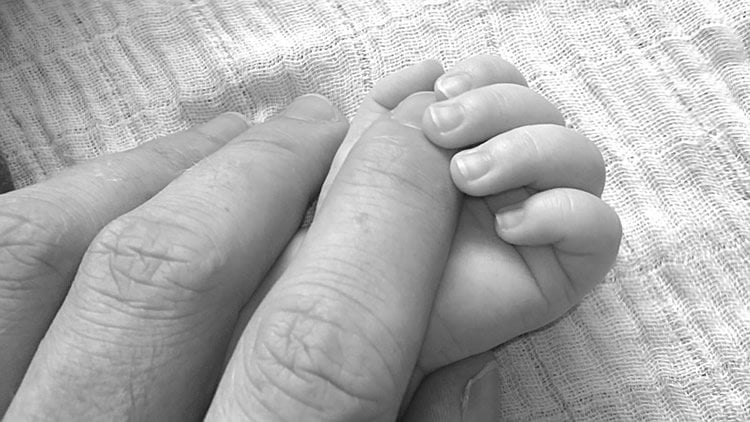Summary: Researchers have identified biomarkers for atypical development in children as young as one month old who are at high risk of familial ASD.
Source: Columbia University Medical Center.
New research from the Sackler Institute for Developmental Psychobiology at Columbia University Medical Center (CUMC) identifies a potential biomarker that predicts atypical development in 1- to 2-month-old infants at high versus low familial risk for developing autism spectrum disorders (ASD). The search for neurobiological markers that precede atypical trajectories is important in infants with a high risk for developing autism-related disorders because early recognition allows for early intervention and mitigation of difficulties later in life.
Using data from National Database for Autism Research (NDAR), lead author Kristina Denisova, PhD, Assistant Professor of Psychiatry at CUMC and Fellow at the Sackler Institute, studied 71 high and low risk infants who underwent two functional Magnetic Resonance imaging brain scans either at 1-2 months or at 9-10 months: one during a resting period of sleep and a second while native language was presented to the infants. After extracting measures of head movements during the scans, the statistical characteristics of these movements were quantified.
The study found that infants at high risk for developing ASD have elevated levels of “noise” and increased randomness in their spontaneous head movements during sleep, a pattern possibly suggestive of problems with sleep. In addition, 1- to 2-month-old high risk infants showed more similar signatures while listening to native language and while sleeping while low risk infants showed distinct signatures during the two conditions.
Further, specific features of head movements during sleep at 1-2 months predicted future flatter (delayed) early learning developmental trajectories in the high-risk babies. The existence of generally atypical learning trajectories in the high risk group was verified in separate data sets from four representative high risk infant-sibling studies comprising a total of 1,445 infants with known ASD outcomes as children. These analyses showed that high risk infants — even those without ASD diagnoses — have significantly lower functioning in childhood relative to low risk infants. The current study reveals a possible way to predict which 1-2 months-old infants will show atypical developmental trajectories as toddlers.

Dr. Denisova said, “The finding that head movement signatures are responsive to high context stimuli (native language speech) in low but not high risk infants is informative because it suggests that infants whose siblings were diagnosed with ASD are less attuned to evolutionarily important stimuli early in life.” She added that this response pattern may underlie atypical information processing in individuals with neurodevelopmental disorders.
Dr. Jeremy Veenstra-VanderWeele, MD, an autism researcher who was not involved in this study, noted, “This study is a good example of how existing data can be mined for new insights. Additional work is needed to replicate the current findings and understand the underlying mechanisms, but this work suggests new ways to look at movement or motor function in infants at high risk of ASD.”
Funding: This work was supported by a Sackler Award in Developmental Psychobiology to Kristina Denisova.
The authors report no financial or other conflicts of interest.
Source: Rachel Yarmolinsky – Columbia University Medical Center
Image Source: NeuroscienceNews.com image is in the public domain.
Original Research: Abstract for “Inflexible neurobiological signatures precede atypical development in infants at high risk for autism” by Kristina Denisova & Guihu Zhao in Scientific Reports. Published online September 12 2017 doi:10.1038/s41598-017-09028-0
[cbtabs][cbtab title=”MLA”]Columbia University Medical Center “Predicting Atypical Development in Infants at High Risk for Autism.” NeuroscienceNews. NeuroscienceNews, 13 September 2017.
<https://neurosciencenews.com/autism-prediction-7477/>.[/cbtab][cbtab title=”APA”]Columbia University Medical Center (2017, September 13). Predicting Atypical Development in Infants at High Risk for Autism. NeuroscienceNews. Retrieved September 13, 2017 from https://neurosciencenews.com/autism-prediction-7477/[/cbtab][cbtab title=”Chicago”]Columbia University Medical Center “Predicting Atypical Development in Infants at High Risk for Autism.” https://neurosciencenews.com/autism-prediction-7477/ (accessed September 13, 2017).[/cbtab][/cbtabs]
Abstract
Inflexible neurobiological signatures precede atypical development in infants at high risk for autism
Variability in neurobiological signatures is ubiquitous in early life but the link to adverse developmental milestones in humans is unknown. We examined how levels of signal and noise in movement signatures during the 1st year of life constrain early development in 71 healthy typically developing infants, either at High or Low familial Risk (HR or LR, respectively) for developing Autism Spectrum Disorders (ASD). Delays in early learning developmental trajectories in HR infants (validated in an analysis of 1,445 infants from representative infant-sibling studies) were predicted by worse stochastic patterns in their spontaneous head movements as early as 1–2 months after birth, relative to HR infants who showed more rapid developmental progress, as well as relative to all LR infants. While LR 1–2 mo-old infants’ movements were significantly different during a language listening task compared to during sleep, HR infants’ movements were more similar during both conditions, a striking lack of diversity that reveals context-inflexible experience of ambient information. Contrary to expectation, it is not the level of variability per se that is particularly detrimental in early life. Rather, inflexible sensorimotor systems and/or atypical transition between behavioral states may interfere with the establishment of capacity to extract structure and important cues from sensory input at birth, preceding and contributing to an atypical brain developmental trajectory in toddlerhood.
“Inflexible neurobiological signatures precede atypical development in infants at high risk for autism” by Kristina Denisova & Guihu Zhao in Scientific Reports. Published online September 13 2017 doi:10.1038/s41598-017-09028-0






